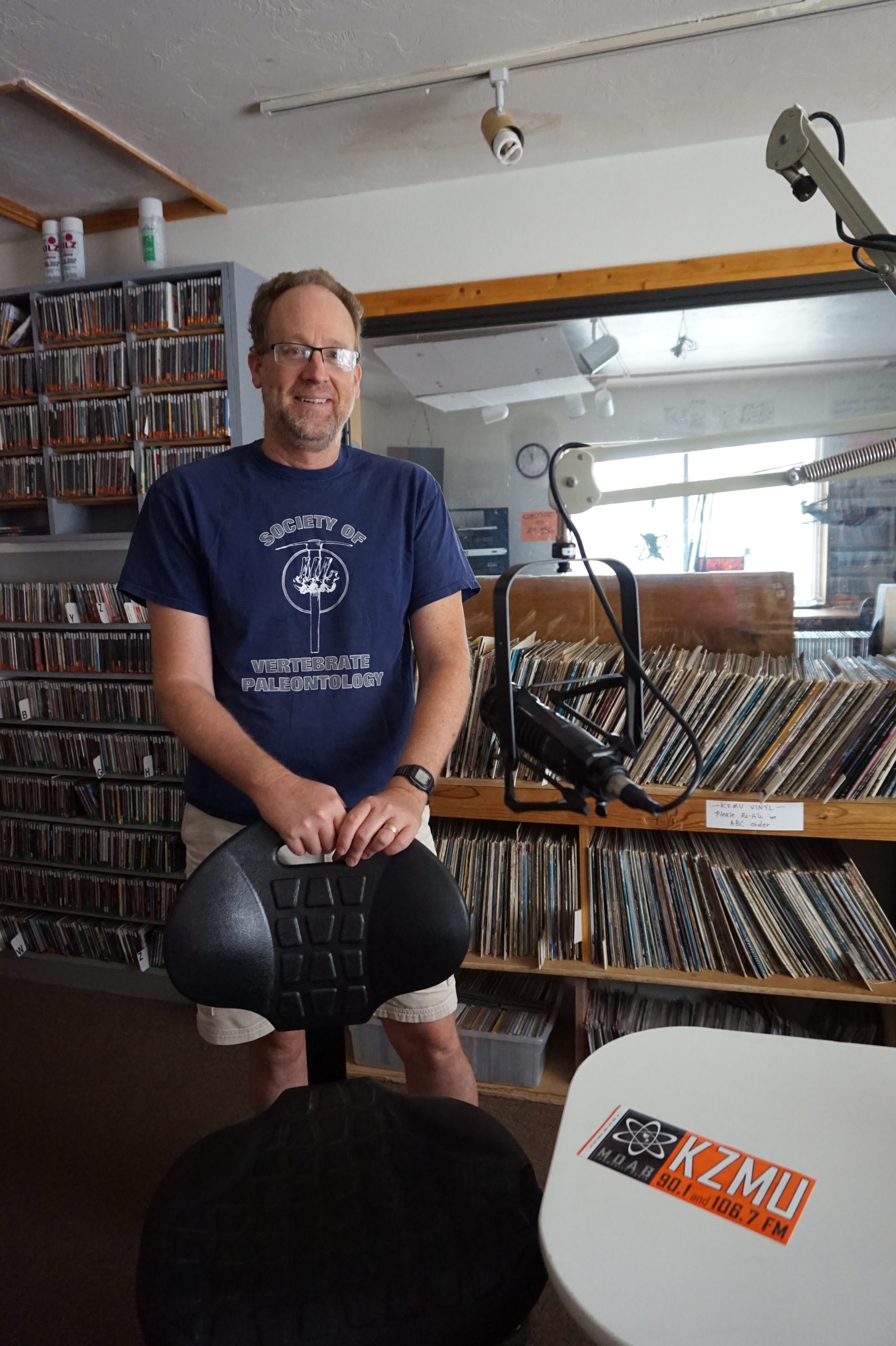Some information may be outdated.
The world that existed when dinosaurs roamed the Moab area was vastly different than the world today. Science Moab asked Dr. John Foster what this region was like during the late Jurassic period when a geologic layer known as the Morrison Formation was being deposited. Foster is a paleontologist and the former director of the Moab Museum whose work includes excavating the oldest known dinosaur skeleton right here.
Science Moab: Tell us about the geologic layer you study called the Morrison Formation?
Foster: Most of the really famous dinosaurs were found in the Morrison Formation starting back in the 1870s, like Brontosaurus, Stegosaurus, Allosaurus and Brachiosaurus, which was actually first found in what is now Grand Junction. So it’s a pretty well-known formation for dinosaurs. At that time, none of the mountains were here. What is now the Rocky Mountain region was essentially flat. So the whole region that we see now, the Colorado Plateau, all the canyons, the mountains of the Rockies, all that was basically just a big flat floodplain. So it was a very different world.
Science Moab: When was the Morrison Formation being deposited?
Foster: Roughly 100 and 50 million years ago. The Morrison represents a time that’s about 7 million years long. It’s late Jurassic, but we’re lucky in that there were mountains off to the West that had a lot of volcanoes in them. That means they pumped a lot of ash into the mudstones in the floodplain and it’s because of those ashes that we can get the dates on how old the rock is.
Science Moab: What was Moab like 100 to 50 million years ago?
Foster: We’d be probably at least 100 miles or so from the mountains. There would have been rivers flowing through this area and there were also a lot of wetlands. The environment would have been not quite a rainforest or anything like that, but it was certainly a lot wetter than it is today. We have a plant study site down by Blanding that we’ve been working and one that was found about 25 years ago down by Bluff that show abundant ginkgoes and ferns and conifer wood and a number of different plants that are a lot more wet-adapted than plants we see now.
Science Moab: And what were the animals like?
Foster: There were a lot of animals. I think they were probably about 20 to 25 different types of dinosaurs at least. There was a diversity of the big long neck, long tail guys, some of which have been found near Moab. Among non-dinosaurs, there’s everything from fish and frogs and salamanders, turtles, lizards, crocodiles, pterosaurs and about as many species of small mammals as there are dinosaurs. In total, there are a little over 100 different species of vertebrates known from the Morrison Formation. And then, of course, there are snails and clams and crayfish and other invertebrates. They finally found an insect fossil over in Colorado a few years ago.
Science Moab: So if we were standing right here during the Jurassic, we would be surrounded by a lot of life?
Foster: Yes, there’s a good chance we’d be standing in the mud with a lot of conifers around, and a lot of little burrowing water-dwelling animals and few dinosaurs probably in the distance. The neat thing about a lot of animals that we’ve been finding recently is that we thought they were all just little herbivores that scurried around at night, but their ecologies were not that simple. In fact, many of them turn out to be quite similar to animals around today.
Science Moab: What does it feel like to find a fossil?
Foster: Sometimes you actually do have to stop and remind yourself that this thing has not seen the light of the sun for 100 or 50 million years and you just exposed it. You forget that sometimes. But of course, every once in a while you find something really rare that shocks you. And you get really excited about that.
Science Moab: What value do you find in the study of paleontology?
Foster: I think the biggest thing is understanding the way past ecosystems function. As jealous as we get of modern biologists being able to actually see these things interacting, I think the value is in the long-term perspective on ecosystems. How they react to change and how the animals and plants really can influence the physical environment as well. Providing that long-term input on biology, in general, is probably the most important part of it.
This interview has been edited for length and clarity. To learn more about Science Moab and listen to the rest of John Foster’s interview, visit www.sciencemoab.org/where-dinosaurs-roamed.
Appreciate the coverage? Help keep local news alive.
Chip in to support the Moab Sun News.





